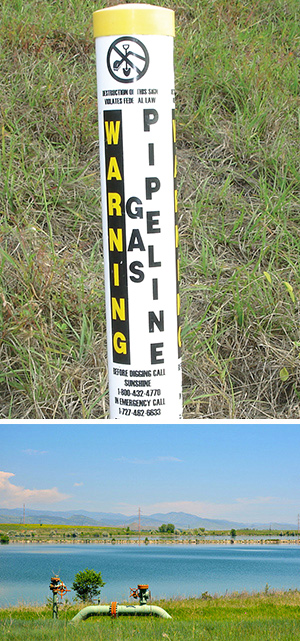Transmission Line Emergencies: Unique Hazards
 Natural gas transmission pipelines comprise a vast network for moving gas across long distances. Although transmission pipeline incidents are rare, they often represent some of the most challenging situations that first responders may encounter. Because natural gas transmission pipelines transport large volumes of gas at high pressures, leaks in transmission pipelines can create very large and dangerous fires and explosions.
Natural gas transmission pipelines comprise a vast network for moving gas across long distances. Although transmission pipeline incidents are rare, they often represent some of the most challenging situations that first responders may encounter. Because natural gas transmission pipelines transport large volumes of gas at high pressures, leaks in transmission pipelines can create very large and dangerous fires and explosions.
Fire departments respond to gas incidents on a regular basis, but these incidents generally involve small distribution lines. Responding to an incident from a natural gas transmission pipeline uses many of the same principles as the response to smaller distribution pipeline leaks. However, volume and high pressure combine to increase the scope and complexity of the incident.
Here are some of the key differences between transmission and distribution pipeline events:
- Transmission lines are larger than distribution lines and, therefore, contain more product volume.
- Natural gas in a transmission pipeline is usually under a much higher operating pressure than that in distribution lines.
- Unlike distribution-based natural gas incidents, you may not be working with the local gas utility. You may instead be working with a pipeline operator that manages the transmission line.
- There are limited options to stop the release of gas. You will need to coordinate with the pipeline operator to resolve the incident safely.
- Natural gas traveling through transmission pipelines typically is not odorized by our supplier, making it more difficult to detect. Use of a CGI is essential.
- With transmission pipelines, many valves can be operated from remote locations. However, after a valve is closed, gas can continue to be released at the same rate for up to 5 minutes before tapering off and stopping.
- Large quantities of natural gas from transmission line leaks can collect inside multiple buildings and confined spaces, causing a high risk of fire or explosion.
- Given the quantity of natural gas that can be released, there is a greater likelihood of an asphyxiation hazard developing as oxygen is displaced.

